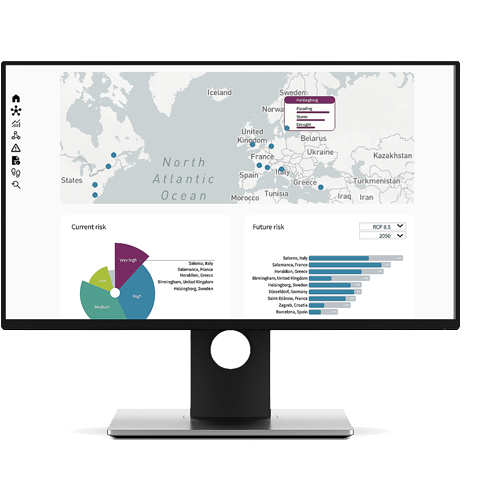Droughts and heatwaves: Mitigating risks to the organisation

2022 was a record-breaking year for European droughts and heatwaves, with extreme weather events impacting countries from France and Spain to Portugal and Italy
Sparking forest fires, evacuations and over 20,000 heat-related deaths, these intense widespread events impacted health and wellbeing, agriculture, energy prices, ecosystems and transport – with significant financial ramifications for corporates.
While extreme, 2022’s scorching summer was by no means an isolated event, as a brief look at the last 20 years demonstrates. As climate change intensifies – and heatwaves and droughts are increasingly a feature of the European climate – what steps can businesses take to prepare and mitigate risks?
Heatwaves and droughts in Europe: frequent, ferocious and expensive
Heatwaves – extended periods of hot weather relative to the expected conditions – are not a new phenomenon in Europe. However, as climate change accelerates, they’re occurring with increasing frequency and ferocity.More than 70,000 people died during Europe’s 2003 heatwave, for example, while the two 2019 heatwaves were the world’s deadliest disasters that year. The Copernicus Climate Change Service has warned that the last 7 years have been the warmest on record – and this trend is set to continue in the coming decades as temperatures continue to rise.
During a drought, the lack of precipitation causes reduced soil moisture or groundwater, crop damage, water shortages and diminished stream flow; heat stress in rivers can also cause droughts. A recurrent feature of the European climate, the frequency and severity of both meteorological and hydrological droughts is nonetheless on the rise, particularly in the south.
Droughts are among the most expensive weather-related disasters, causing issues from property damage to water scarcity. The 2018 drought resulted in losses in forestry and agriculture totalling €3.3 billion; according to reports from reinsurers, only €230m of this sum was insured.
The European Central Bank identified heat and drought stress as primary risks. So, for corporates spanning sectors from financial services to maritime and logistics, energy and industry, the potential for negative consequences – on everything from operations and supply chains to business continuity – is severe.
How can you equip your business to mitigate drought and heatwave risks?
Twinn Climate Risk Analytics (formerly under the Ambiental brand) delivers intelligence spanning 19 hazards – including heat and drought. Leveraging our risk management platform, we equip you with the tools and solutions to become climate resilient, predicting and preventing obstacles to long-term growth.Our risk intelligence platform provides exposure analysis and actionable insights for any location or address. That means you can see the impact of drought and heat waves on your assets, as well as those of your suppliers and customers. Combining machine learning capabilities with exposure analysis and scoring, you get a risk profile for your assets now and under future climate epochs and scenarios. That way, you can visualise risks before they cause issues that impact your operations and profitability.
As the risk of heat and drought stress rises – with the inevitable corresponding increase in economic and human loss – Twinn leverages technology to help you adapt and mitigate risks, while powering your path to net zero and ensuring you meet regulatory requirements.

How to get started with understanding your organisation's climate risk exposure
From engaging stakeholders to informing insurance decisions, quantifying your climate risk profile and designing a long-term climate resilient solution, we’re there at every stage of the climate risk management process. The easiest way to get started is with a free Climate Risk Quick Scan. You simply upload a list of your organisation’s physical assets (anywhere in the world), and you get a free report with actionable insights on how those assets are affected by risks from climate change, natural hazards and severe weather.
